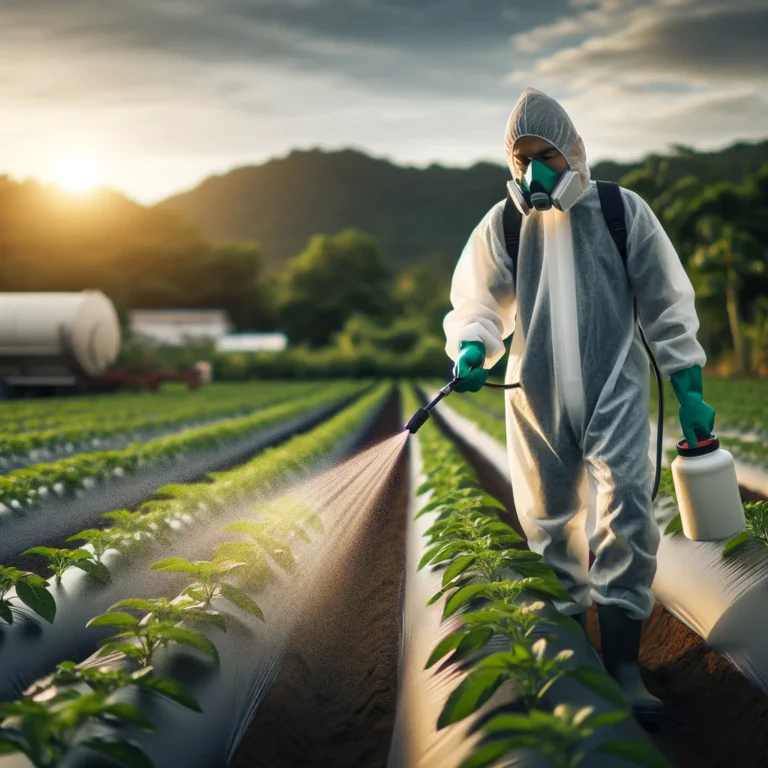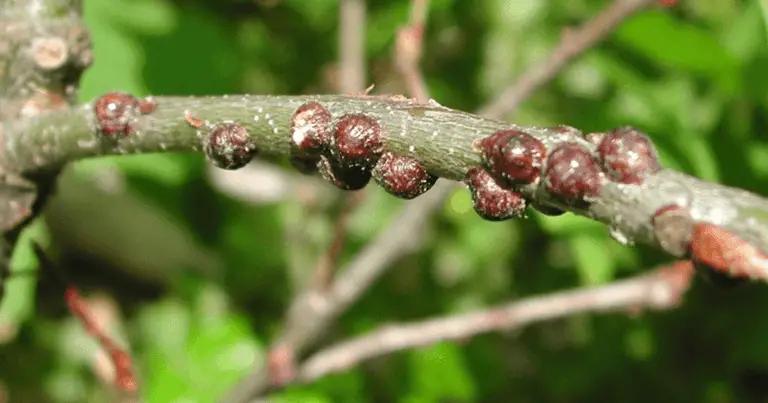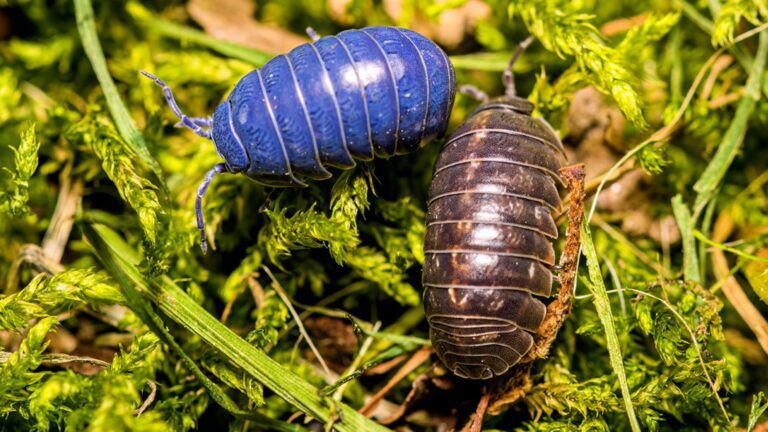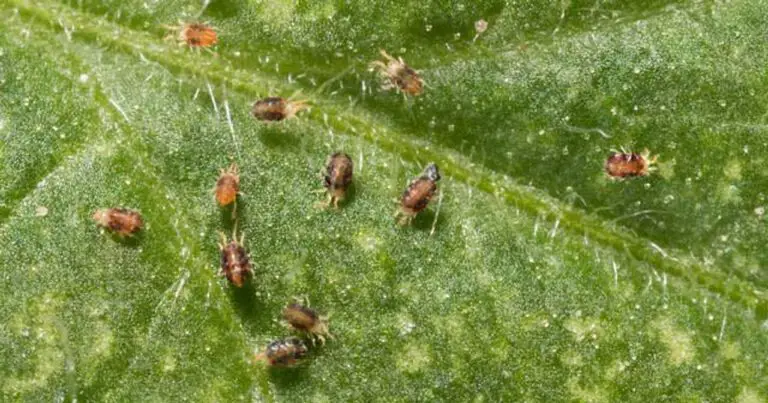How to Safeguard Your Outdoor Grow from Pests, Diseases, and Weather
Table of Contents
Identifying potential threats to your outdoor grow
With the increasing popularity of outdoor growing, it is crucial to be aware of the potential threats that can jeopardize the health and productivity of your plants. One such threat is pest infestations, which can cause significant damage if not addressed promptly and effectively. Pests such as aphids, mites, caterpillars, and slugs can wreak havoc on your plants, feeding on their leaves, stems, and fruits. Identifying the presence of pests early on is essential to implementing appropriate measures and preventing excessive damage. Regularly inspecting your plants for signs of pest activity, such as chewed leaves, stippling, discoloration, or the presence of insects, is crucial for maintaining a healthy garden.

Another potential threat to your outdoor grow is the presence of diseases, which can severely impact the overall health and vitality of your plants. Common diseases that can affect outdoor crops include powdery mildew, blight, rust, and various rotting diseases. Recognizing the symptoms of these diseases, such as wilting, yellowing leaves, malformed fruits, or lesions, is crucial for taking proactive steps to minimize their risks. Furthermore, understanding the conditions that favor the development and spread of these diseases, such as humid and warm weather or poor air circulation, can help you create a gardening environment that is less susceptible to such issues. By being vigilant and proactive in identifying potential threats like pests and diseases, you can ensure the success and longevity of your outdoor garden.
Understanding the impact of pests on your plants
Pests can have a significant impact on the health and productivity of your plants. These unwanted visitors, ranging from insects to rodents, can cause damage by feeding on leaves, stems, and fruits, leading to stunted growth, reduced yields, and even plant death. Additionally, pests can transmit diseases, further compromising the overall well-being of your outdoor grow.

Insects such as aphids, caterpillars, and beetles are some of the most common pests that can wreak havoc on your plants. They may consume plant tissues, while also introducing toxins or pathogens into the plants. Rodents, on the other hand, can nibble on fruits and roots, resulting in partial or complete crop loss. The impact of pests can be particularly devastating for organic growers, as they typically avoid using synthetic chemical pesticides and rely on natural methods of pest control. Identifying and understanding the threats posed by pests is crucial in order to implement effective pest management strategies and ensure the success of your outdoor grow.
Preventing pest infestations through proper plant selection
Proper plant selection is a crucial step in preventing pest infestations in your outdoor grow. By choosing plants that are naturally resistant or tolerant to common pests, you can significantly reduce the risk of an infestation and ultimately promote a healthier garden.
When selecting plants, consider those that have built-in defenses against pests. For example, certain herbs, such as rosemary and thyme, contain natural oils that repel many common garden pests. Additionally, planting flowers like marigolds can help deter insects due to their strong scent. By incorporating these types of plants into your garden, you create a less hospitable environment for pests, reducing the likelihood of an infestation.
Furthermore, it’s essential to research the specific pests that are prevalent in your area and choose plants that are known to be resistant to them. For instance, if aphids are a common problem in your region, selecting aphid-resistant varieties can be a proactive measure to prevent an infestation. Additionally, consider the growing conditions and environmental factors of your garden when selecting plants. Some plants may be more susceptible to pests in certain conditions, so choose varieties that thrive in your specific climate and soil type.
By employing these strategies, you can take a proactive approach to prevent pest infestations in your outdoor grow. Selecting pest-resistant plants and considering the unique factors of your garden can greatly reduce the risk of pests compromising the health and productivity of your plants.
Implementing effective pest control measures without harming the environment
Implementing effective pest control measures is crucial for maintaining the health and productivity of your outdoor grow. However, it is equally important to prioritize environmentally friendly methods that do not harm the ecosystem. By adopting sustainable practices, you can protect beneficial insects, soil health, and overall biodiversity, while still effectively managing pests.
One method to control pests without causing harm to the environment is through the use of biological control agents. Beneficial insects such as ladybugs, lacewings, and parasitic wasps can be introduced to your garden to naturally prey on pests like aphids, mites, and caterpillars. These predators can help keep pest populations under control without the need for chemical pesticides. Additionally, attracting birds, bats, and other wildlife to your garden can also act as a natural pest control method, as these animals feed on insects that may be detrimental to your plants.
Here’s a table on implementing effective pest control measures without harming the environment:
| Pest Control Method | Description | Environmental Impact |
|---|---|---|
| Biological Control | Introduce natural predators, parasites, or pathogens to control pest populations. | Minimal impact on the environment as it utilizes natural mechanisms. |
| Crop Rotation | Rotate crops to disrupt pest life cycles and reduce pest populations. | Environmentally friendly; improves soil health and reduces reliance on chemical pesticides. |
| Companion Planting | Planting compatible crops together to deter pests naturally. | Low environmental impact; promotes biodiversity and reduces the need for chemical interventions. |
| Natural Predators Attraction | Create habitats that attract beneficial insects or animals that prey on pests. | Positive impact on local ecosystems; encourages natural balance without using chemicals. |
| Neem Oil and Soap Solutions | Use natural substances like neem oil or soapy water to repel or control pests. | Minimal environmental impact; biodegradable and less harmful than synthetic pesticides. |
| Organic Pesticides | Utilize certified organic pesticides made from natural ingredients. | Lower environmental impact compared to synthetic pesticides; breaks down more easily. |
| Integrated Pest Management (IPM) | Combine various pest control methods in a coordinated approach, considering environmental impact. | Minimizes overall environmental impact by using a holistic and targeted strategy. |
| Traps and Barriers | Use physical barriers or traps to control pest movement. | Environmentally friendly; does not involve chemical substances that can harm ecosystems. |
| Cultural Practices | Adopt practices such as proper sanitation and timing of planting to prevent pest infestations. | Low environmental impact; focuses on preventive measures. |
| Educational Programs | Raise awareness among farmers and the public about sustainable pest control practices. | Positive impact by promoting environmentally friendly approaches and reducing reliance on harmful methods. |
Another approach is to employ cultural practices that discourage pest infestations. This involves techniques such as crop rotation, intercropping, and companion planting. By regularly changing the location of different crops, pests that rely on a specific plant species will struggle to establish themselves. Intercropping involves growing multiple plant species together, which can disrupt the breeding and feeding patterns of pests. Additionally, companion planting involves strategically placing certain plants next to each other, which can help repel pests and attract beneficial insects. These cultural practices not only minimize pests but also promote a healthy and diverse garden ecosystem.
Recognizing common diseases that can affect your outdoor grow
Common diseases can pose a significant threat to the health and productivity of your outdoor grow. By familiarizing yourself with these ailments, you can take early action to prevent their spread and minimize the damage they can cause.
One prevalent disease to be aware of is powdery mildew. This fungal infection appears as a white or gray powdery coating on plant leaves, stems, and buds. It thrives in warm and humid conditions, making it particularly troublesome for outdoor growers. If left untreated, powdery mildew can stunt plant growth, distort leaves, and reduce yields. Regularly inspecting your plants for the characteristic powdery growth and promptly implementing preventive measures such as improving airflow, reducing humidity, and using appropriate fungicides can help keep this disease at bay.
Another common outdoor grow disease is tomato blight. This destructive fungal infection affects both tomatoes and other Solanaceous plants. It typically manifests as dark, water-soaked spots on foliage, stems, and fruits. As the disease progresses, the spots may enlarge and develop a fuzzy, mold-like growth. Early detection is crucial, as tomato blight can quickly spread and decimate entire crops. Implementing proper watering practices, practicing crop rotation, and utilizing disease-resistant plant varieties can help minimize the risk of tomato blight affecting your outdoor grow. Monitoring your plants closely and taking immediate action at the first sign of infection is essential to prevent further spread and protect your plants’ health.
Taking proactive steps to minimize disease risks
Minimizing the risk of disease in your outdoor grow requires a proactive approach that focuses on prevention rather than treatment. By implementing a few simple steps, you can significantly reduce the chances of your plants falling victim to harmful diseases.
This table outlines the proactive steps to minimize disease risks in plants:
| Proactive Steps | Description |
|---|---|
| 1. Crop Rotation | Rotate the types of crops planted in a given area each season to disrupt the life cycle of pathogens. |
| 2. Proper Watering | Provide adequate but not excessive watering to prevent waterlogged conditions that favor diseases. |
| 3. Resistant Varieties | Choose plant varieties that are resistant to common diseases prevalent in your region. |
| 4. Sanitation Practices | Regularly remove and dispose of infected plant debris to reduce the reservoir of pathogens. |
| 5. Adequate Spacing | Plant crops with sufficient spacing to improve air circulation, reducing the likelihood of disease spread. |
| 6. Healthy Soil Management | Maintain nutrient-rich and well-draining soil to promote plant health and resilience against diseases. |
| 7. Integrated Pest Management | Implement a comprehensive approach that combines biological, cultural, and chemical control methods. |
| 8. Early Detection and Diagnosis | Regularly inspect plants for signs of diseases, and promptly diagnose and treat any identified issues. |
| 9. Quarantine Measures | Isolate new plants before introducing them to your garden to prevent the spread of potential diseases. |
| 10. Education and Monitoring | Stay informed about local disease threats and monitor plant health, adjusting practices accordingly. |
First and foremost, it is crucial to practice good garden hygiene. Regularly remove any dead leaves, plant debris, or fallen fruits from the garden area. These can act as breeding grounds for diseases and pests, and their removal ensures a clean and healthy environment for your plants. Additionally, be mindful of cross-contamination by cleaning and disinfecting your gardening tools after each use. This simple step can prevent the spread of pathogens from one plant to another. Maintaining a clean and well-organized garden is the first line of defense against diseases that can harm your outdoor grow.
Choosing disease-resistant plant varieties for your outdoor grow
One of the key factors in protecting your outdoor grow against diseases is choosing plant varieties that are resistant to common diseases. Disease-resistant plant varieties have been specially bred or genetically modified to have natural defenses against certain pathogens. By selecting these varieties, you can significantly reduce the risk of your plants succumbing to harmful diseases.
When choosing disease-resistant plant varieties for your outdoor grow, it is important to consider the specific diseases that are prevalent in your region or area. Different plant varieties have varying levels of resistance to different diseases, so it is crucial to select varieties that are resistant to the specific diseases that pose a threat to your crops. Conducting thorough research and consulting with local gardening experts or agricultural extension services can provide valuable insights into the most common diseases in your area and the plant varieties that have proven resistance to them.
By prioritizing disease-resistant plant varieties in your outdoor grow, you can create a resilient and healthy garden that is better equipped to withstand potential disease outbreaks. Not only will this help preserve the health and vitality of your plants, but it can also save you time, effort, and resources that would otherwise be spent on combating diseases. Remember, prevention is key, and selecting disease-resistant plant varieties is an important step towards safeguarding your outdoor grow against potential threats.
Creating a healthy growing environment to ward off diseases
Creating a healthy growing environment is crucial for warding off diseases in your outdoor grow. By providing optimal conditions for your plants, you can help prevent the onset and spread of various plant diseases. There are several key factors to consider when aiming to create a thriving and disease-resistant growing space.
Firstly, maintaining proper hygiene is essential. Regularly removing fallen leaves, plant debris, and weeds from your garden helps eliminate potential breeding grounds for pests and diseases. Additionally, practicing crop rotation can help break disease cycles and reduce the risk of infections. By changing the planting location of specific crops each season, you can disrupt the life cycles of disease-causing pathogens, minimizing their impact on your plants.
Moreover, providing adequate spacing between plants is crucial for promoting air circulation and reducing disease transmission. Plants grown in overcrowded conditions are more susceptible to fungal infections and other diseases that thrive in humid environments. Proper spacing allows for better sunlight penetration and airflow, creating less favorable conditions for pathogen development. Additionally, it is essential to choose disease-resistant plant varieties that are known for their ability to withstand common diseases prevalent in your region.
Mitigating the impact of extreme weather conditions on your plants
Extreme weather conditions can pose a significant threat to your outdoor plants, potentially causing damage and even death. High temperatures, strong winds, heavy rains, and freezing temperatures are just a few of the weather elements that can wreak havoc on your garden. To mitigate the impact of such conditions, it is crucial to implement protective measures.
Want to know more? Refer to this video!
One effective way of safeguarding your plants from extreme weather is by providing them with a sturdy support system. Tall plants, such as tomatoes or sunflowers, are particularly vulnerable to wind damage. Staking or caging these plants will help anchor them securely and prevent them from toppling over. Additionally, using row covers or protective screens can shield your plants from excessive heat or intense sunlight. These covers can also act as a barrier against heavy rains, preventing waterlogged soil and potential root rot. By being proactive and taking these precautions, you can significantly minimize the negative effects of extreme weather on your outdoor grow.
Implementing protective measures against harsh weather elements
Harsh weather conditions can pose significant challenges to the health and vitality of your outdoor grow. However, by implementing protective measures, you can help safeguard your plants against the adverse effects of extreme weather. One effective measure is the installation of shade structures or temporary canopies to shield your plants from intense sunlight and high temperatures. These structures not only provide shade but also help regulate temperature and reduce the risk of heat stress or sunburn on your plants.
Another important aspect to consider is protecting your outdoor grow from strong winds and heavy rains. Building windbreaks or installing fencing around your garden can help create a barrier and minimize the impact of gusts, preventing wind damage to your plants. Additionally, using mulch or ground covers on the soil surface can help retain moisture and prevent erosion during heavy downpours, ensuring that your plants receive the necessary water without being overwhelmed by excessive rainfall.
By taking these protective measures against harsh weather elements, you can provide your outdoor grow with a more stable and favorable environment, allowing your plants to thrive and reach their full potential. Remember, understanding the specific weather conditions in your region and tailoring your protective strategies accordingly is key to ensuring the long-term success of your garden.
Understanding the importance of proper watering and drainage for plant health
Proper watering and drainage are essential factors in maintaining the health and vitality of your outdoor plants. When it comes to watering, it’s important to strike a balance between providing enough moisture for the plants to thrive and avoiding overwatering, which can lead to root rot and other detrimental conditions.
To ensure proper watering, consider the specific needs of your plants, including their species, growth stage, and environmental conditions. Some plants may require more frequent watering, while others may prefer drier conditions. Aim to water your plants thoroughly, allowing the water to penetrate the soil and reach the roots. As a general rule, it’s better to water deeply and infrequently rather than with shallow, frequent waterings. This encourages the roots to grow deeper, making the plants more resilient and less dependent on regular watering.
In addition to watering, good drainage is crucial for plant health. Without proper drainage, excess water can accumulate around the roots, leading to suffocation and root diseases. To promote effective drainage, ensure that your planting containers or garden beds have sufficient drainage holes in the bottom. This allows excess water to escape and prevents waterlogged conditions. If your plants are in an area with poor natural drainage, consider amending the soil with organic matter or using raised beds to improve drainage and prevent water-related issues.
By practicing proper watering techniques and ensuring adequate drainage, you are setting the foundation for healthy and thriving plants. These simple yet important steps will go a long way in maintaining the overall well-being of your outdoor grow.
Utilizing organic and natural methods to safeguard your outdoor grow
Utilizing organic and natural methods is an effective strategy to safeguard your outdoor grow from potential harm. By avoiding the use of synthetic chemicals and pesticides, you not only promote a healthier environment but also maintain the integrity of your plants. Organic gardening methods prioritize the use of natural fertilizers, such as compost and manure, which provide essential nutrients to your plants while enriching the soil.
Additionally, natural pest control methods can help protect your outdoor grow. Introducing beneficial insects, like ladybugs and praying mantises, can help control harmful pests by preying on them. Additionally, using companion planting techniques, where you grow certain plants together to deter pests, can also be beneficial. For example, planting marigolds near your vegetables can repel pests like nematodes and aphids.
Furthermore, implementing proper crop rotation techniques can help reduce the risk of diseases spreading in your outdoor grow. Rotating the types of plants in your garden each year can disrupt the life cycles of pests and pathogens, preventing them from becoming established. This practice is particularly effective in preventing soil-borne diseases such as fusarium wilt or clubroot.
By employing these organic and natural methods, you not only protect your outdoor grow from potential threats, but you also foster a sustainable and resilient gardening environment. Embracing nature’s own solutions can lead to healthier and more productive plants, while minimizing harm to the ecosystem.
Monitoring and regularly inspecting your plants for early detection of issues
Regular monitoring and inspection of your outdoor plants is crucial for early detection of any issues that may arise. By keeping a close eye on your plants, you can identify problems before they escalate, allowing you to take immediate action and prevent potential damage. This proactive approach is essential in maintaining the health and vitality of your outdoor grow.
During your regular inspections, it is important to thoroughly examine all aspects of your plants. Look for any signs of pest infestations, such as chewed leaves, webs, or discolored patches. Additionally, check for any unusual growth patterns, discoloration, or wilting, as these can be indications of disease or nutrient deficiencies. By being attentive and observant, you can detect these issues early on and implement the necessary measures to resolve them, preventing further damage to your plants.
FAQs
How often should I inspect my plants for potential issues?
It is recommended to regularly inspect your plants at least once a week to detect any early signs of problems promptly.
What are some common pests that can harm outdoor plants?
Common pests that can impact outdoor plants include aphids, caterpillars, slugs, snails, and spider mites.
How can I prevent pest infestations in my outdoor grow?
Selecting pest-resistant plants, maintaining proper plant spacing, and implementing natural pest control methods like companion planting can help prevent pest infestations.
How can I control pests without harming the environment?
You can use organic pest control methods such as neem oil, insecticidal soaps, and introducing beneficial insects like ladybugs or praying mantises to control pests without harming the environment.
What are some common diseases that can affect outdoor plants?
Common diseases that can affect outdoor plants include powdery mildew, bacterial spot, fungal infections, and root rot.
How can I minimize the risks of diseases in my outdoor grow?
Taking proactive steps such as proper sanitation, providing adequate air circulation, and avoiding overwatering can help minimize the risks of diseases in your outdoor grow.
Are there any plant varieties that are more resistant to diseases?
Yes, there are disease-resistant plant varieties available for outdoor growing. Researching and selecting these varieties can help reduce the likelihood of disease issues.
How can I create a healthy growing environment for my outdoor plants?
Ensure proper soil drainage, provide sufficient sunlight, maintain appropriate watering practices, and avoid overcrowding to create a healthy growing environment for your outdoor plants.
How can I protect my plants from extreme weather conditions?
Implement protective measures such as using row covers, mulching, or providing shade during intense heat to mitigate the impact of extreme weather conditions on your plants.
What is the importance of proper watering and drainage for plant health?
Proper watering and drainage are crucial for plant health as they help prevent waterlogged soil, root rot, and nutrient imbalances. They also ensure plants receive sufficient moisture without being overwatered.
Are there organic and natural methods to safeguard my outdoor grow?
Yes, you can use organic methods such as homemade insecticidal sprays, introducing beneficial insects, and using natural fungicides to safeguard your outdoor grow without using harmful chemicals.
How often should I monitor and inspect my plants for early detection of issues?
Regular monitoring and inspection at least once a week are recommended to detect any issues early on and take necessary actions promptly.

Pallavi Gupta is a burgeoning writer at SouthElMonteHydroponics, blending her passion for data analysis with a keen interest in biotechnology. Currently pursuing a Bachelor’s in Biotechnology at Amity University, Pallavi delves into the intricacies of life sciences while gaining hands-on experience in the exciting world of data analysis. Her unique background provides a fresh perspective on hydroponic farming, as she explores the intersection of biotechnology and sustainable agriculture. Through her writing, Pallavi aims to bridge the gap between data-driven insights and innovative farming practices, inspiring others to harness technology for a greener future.







